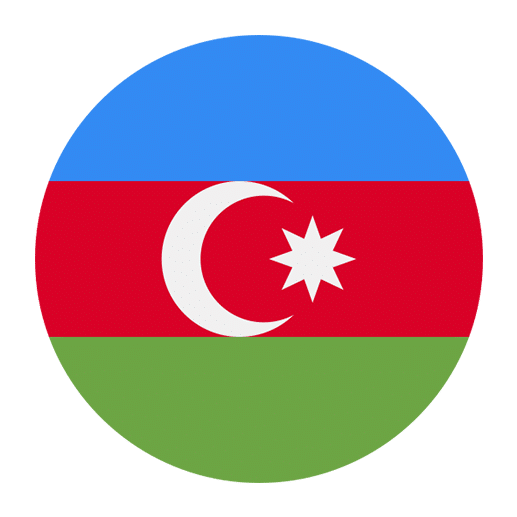Learning a new language involves understanding its grammar, vocabulary, and nuances. One of the fundamental aspects of mastering any language is getting a good grasp of prepositions, which are words that link nouns, pronouns, or phrases to other words within a sentence. In this article, we will explore common prepositions in the Azerbaijani language, providing you with a comprehensive guide to help you navigate through sentences more effectively.
What are Prepositions?
Prepositions are words that show the relationship between a noun or pronoun and other elements in a sentence. They often indicate aspects such as location, direction, time, and manner. In English, examples of prepositions include “in,” “on,” “at,” “by,” “for,” and “with.” Similarly, Azerbaijani also has its own set of prepositions that serve these functions.
Basic Azerbaijani Prepositions
Let’s start by looking at some of the most common prepositions in Azerbaijani. These basic prepositions are essential for constructing simple and complex sentences alike.
İçində (in)
The preposition “içində” means “in” or “inside.” It is used to indicate that something is within a certain space or area.
Example:
– Kitab çantanın içindədir. (The book is in the bag.)
Üstündə (on)
“Üstündə” means “on” or “on top of.” This preposition is used when something is situated on the surface of another object.
Example:
– Qələm masanın üstündədir. (The pen is on the table.)
Yanında (next to)
“Yanında” translates to “next to” or “beside.” It indicates that something is located adjacent to another object.
Example:
– Maşın evin yanındadır. (The car is next to the house.)
Altında (under)
“Altında” means “under” or “beneath.” It shows that one object is positioned below another.
Example:
– Pişik masanın altındadır. (The cat is under the table.)
Arxasında (behind)
“Arxasında” translates to “behind.” It is used to indicate that something is positioned at the rear of another object.
Example:
– Uşaq divarın arxasındadır. (The child is behind the wall.)
Prepositions Indicating Time
Just like in English, Azerbaijani prepositions can also be used to indicate time. Here are a few examples:
Ərzində (during)
“Ərzində” means “during.” It is used to denote the duration of an event or action.
Example:
– Tətil ərzində çox kitab oxudum. (I read a lot of books during the holiday.)
Əvvəl (before)
“Əvvəl” translates to “before.” This preposition is used to indicate a point in time preceding another event.
Example:
– Səhər yeməyindən əvvəl qaçmağa getdim. (I went for a run before breakfast.)
Sonra (after)
“Sonra” means “after.” It is used to denote that an action takes place following another event.
Example:
– Filmdən sonra restorana getdik. (We went to the restaurant after the movie.)
Prepositions Indicating Direction
Understanding prepositions that indicate direction is crucial for giving and following directions, as well as for describing movement.
Yönündə (towards)
“Yönündə” translates to “towards.” It is used to indicate movement in the direction of a particular place or object.
Example:
– Məktəbə yönündə gedirik. (We are going towards the school.)
Uzaq (far from)
“Uzaq” means “far from.” This preposition is used to describe a considerable distance between two points.
Example:
– Evimiz şəhərdən uzaqdır. (Our house is far from the city.)
Yaxın (near)
“Yaxın” translates to “near” or “close to.” It indicates proximity between objects or places.
Example:
– Kitabxana universitetə yaxındır. (The library is near the university.)
Compound Prepositions
Just like in English, Azerbaijani also has compound prepositions. These are prepositions formed by combining two or more words to convey a specific meaning.
Ətrafında (around)
“Ətrafında” means “around.” It is used to indicate the surrounding area of an object.
Example:
– Evin ətrafında gəzirdik. (We were walking around the house.)
Arasında (between)
“Arasında” translates to “between.” This preposition is used to indicate that something is situated in the middle of two other objects.
Example:
– Maşın iki ağacın arasındadır. (The car is between two trees.)
Special Cases and Variations
Azerbaijani, like any other language, has special cases and variations when it comes to the use of prepositions. These can often depend on context, idiomatic expressions, or regional dialects.
İlə (with)
“İlə” means “with.” It is used to indicate accompaniment or possession.
Example:
– Dostum ilə kinoya getdim. (I went to the cinema with my friend.)
Üçün (for)
“Üçün” translates to “for.” This preposition is used to indicate purpose or reason.
Example:
– Bu hədiyyə sən üçündür. (This gift is for you.)
Barədə (about)
“Barədə” means “about” or “concerning.” It is used to indicate the subject of a discussion or piece of information.
Example:
– Kitab Azərbaycan tarixi barədədir. (The book is about the history of Azerbaijan.)
Practical Tips for Learning Azerbaijani Prepositions
Mastering prepositions in Azerbaijani can be a challenge, but with consistent practice and application, you can become proficient. Here are some practical tips to help you along the way:
1. Practice with Sentences
Try to use new prepositions in sentences to see how they function within the context. This will help reinforce your understanding and improve your ability to use them correctly.
2. Flashcards
Create flashcards with Azerbaijani prepositions on one side and their English equivalents on the other. Regularly reviewing these flashcards can help you memorize them more effectively.
3. Language Exchange
Engage in language exchange with native Azerbaijani speakers. Conversing with them will give you practical experience and expose you to how prepositions are used in everyday speech.
4. Reading and Listening
Read Azerbaijani texts and listen to Azerbaijani audio materials. Pay attention to how prepositions are used in different contexts, and try to mimic those usages in your own speech and writing.
5. Grammar Exercises
Work on grammar exercises specifically focused on prepositions. These exercises will provide structured practice and help you identify any areas where you need improvement.
Conclusion
Prepositions are a vital part of any language, and Azerbaijani is no exception. By understanding and practicing the common prepositions outlined in this article, you will be well on your way to constructing more accurate and meaningful sentences in Azerbaijani. Remember, consistency is key, so make sure to integrate these prepositions into your daily practice. Happy learning!

